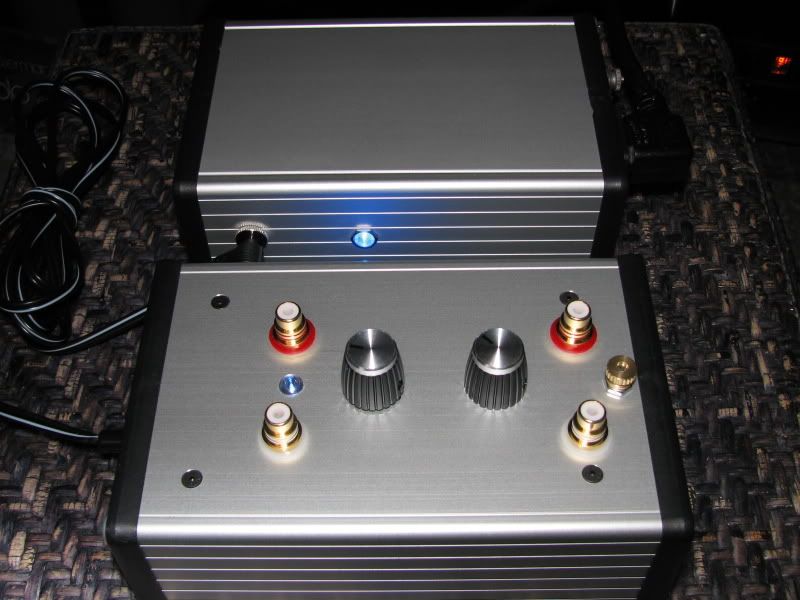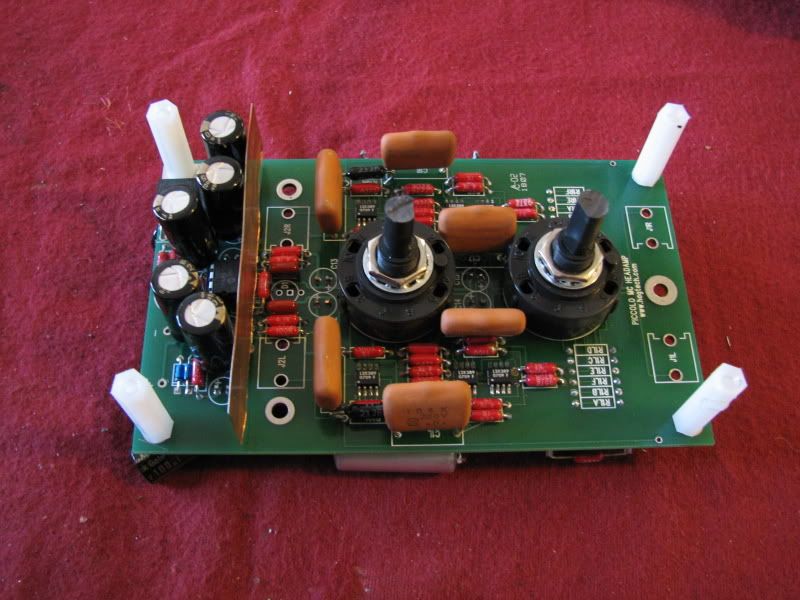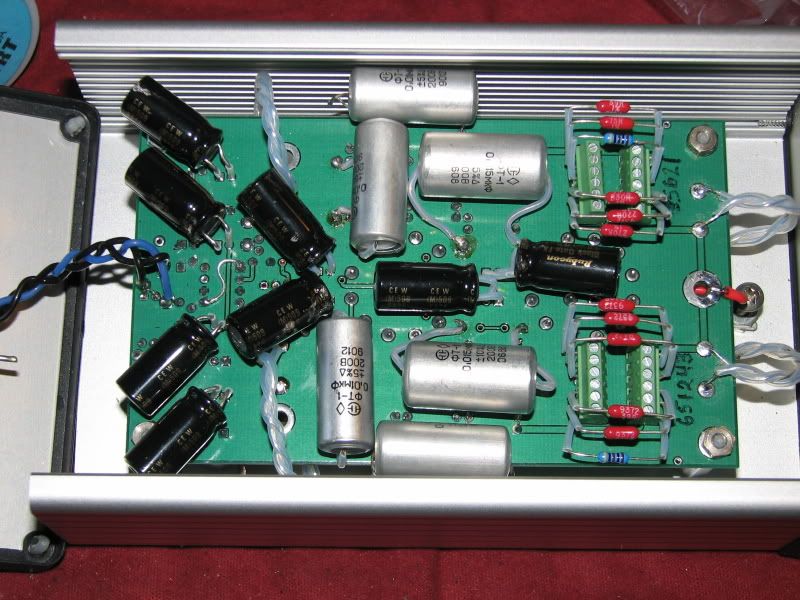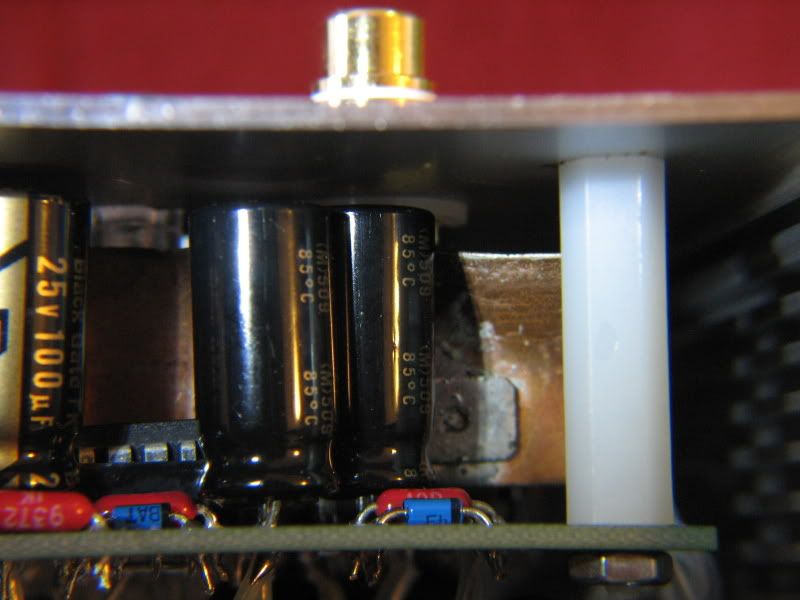I built my Piccolo with just a few minor changes to the overall piece.
First, I am using the superb Vampire direct gold plated oxygen free copper female RCA jacks. These are my favorite cost responsible RCA's I have found. They are a little more clear and quiet than the Vampire hex head gold on brass pieces I used to use. They cost only a couple dollars more.
The switches are nostalgic pieces. Anyone owning a Fender amp will recognize these. You can buy them from Antique Electronics where you get the Hammond transformers and stainless hardware for the Clarinet and Cornet 2 projects.

I built my Piccolo into an attractive and efficient Hammond extruded aluminum case. These cost less than 20 dollars on Digikey and they come in clear or in black. The case was extremely important to the success of the project as you will see in other pictures.
On the board, I am using PRP 1/4 watt resistors with only a couple exceptions. Jim has spec'd a 232 ohm resistor to correctly balance the circuit. PRP does not have this value, so I selected a 1/2 watt Holco resistor to do that duty. I bought these at Parts Connexion. Please beware that all 4 of my 470R resistors were way out of spec. One of my two 390R resistors were also way out of spec. Parts Connexion has replaced these quickly and painlessly with correctly valued pieces. Their customer service is top notch. The other odd resistor is a Yageo 1/4 watt 400 ohm resistor pair in the cartridge loading bay. They are there until my 390R replacement arrives from Parts Connexion.
I am using a socket for the DC offset device. I did this because I hope that some day I can find a better piece for this device. From what I have seen on the scope these have a fairly nasty high frequency resonance around 19-20khz. I hope some day they will have one that is out beyond 30khz.
Using a socket will make such a change a lot easier to accomplish.
I upgraded the Panasonic 100 volt film resistors to 200 volt models and have bypassed these with teflon caps at 0.010 or 0.015uf values. The teflon gives you that clarity and growl in the bass lines that is really something to witness first hand.

I have a big piece of TI shield across the power supply aspect of the Piccolo. I soldered these to the supplied connector lugs Jim provides on the kit.
The big change was to use Black Gate caps for the electrolytics. These are 100uf 25v models from Percy Audio. These run 5.75 each so this is an 85 dollar upgrade. Their noise floor is the lowest of any capacitor on earth. These are so large I had to stagger these caps.

One is on top and the adjacent cap is soldered to the board below. This is the only way I could use these caps. The Hammond box is deep enough to make this work out as long as I bent them over the board. I used teflon tubing to make sure these leads don't ever short to anything.

I am using 1 inch nylon risers on the board just as you do with the Clarinet and Cornet 2. This gives you the room you need for these taller pieces. Because of this it was not really possible to use the recommended RCA jacks as Jim does on his Piccolo. I like the Vampires better anyway so this was not an issue in my build. I use solid 0.025" silver from A-M Systems. This is bare wire. I run this inside a big teflon tube to allow air to be the primary dielectric. I twist this to help reject RF interference.
I like the connection pieces on the bottom which are similar to what ECIR38 used on his Piccolo. You can swap resistors in minutes--without any risk of ruining a trace. I bought a bunch of other PRP resistors in order to make resistor swaps fun and easy on my upcoming vacation where this will plug into other friend's systems for evaluation.
Everything is breaking in nicely right now. The teflons and film caps are going through their break in periods and the Black Gates will take at least another week.
More to follow regarding the sound. So far the noise floor is lower than my CineMag SUT and the low level detail has a lot more visceral growl and weight. Mission accomplished at this juncture in time.